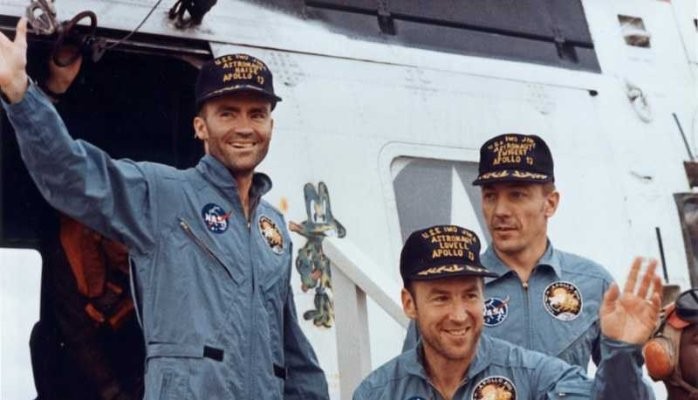
The moon is approximately 384,000 kilometres from earth. It is so far away that when you are orbiting the moon the earth can fit behind your thumb. The use of your thumb to measure the size of the earth may seem unscientific but that’s how Commander Jim Lovell measured it on Apollo 13.
Recently I had the pleasure of hearing Jim Lovell talk about his experiences on that extraordinary flight or as he likes to call it ‘a successful failure’. Jim raised a number of thought provoking comments during his presentation which I feel were equally transferable into any organization whether in crisis or not:
Success depends on………
- leadership;
- initiative; and
- team work
Trust the data but understand you need to take control…….
When Apollo 13 first encountered significant failures the crew were well aware of what was happening. However, ground control, at first, didn’t believe the data coming from the space craft and thought it was a communication problem. Jim’s response was to slow down his thinking, work out what he needed to do next and have a view about what the long term goal was.
It wasn’t too long before ground control worked out the data was correct but it may have taken longer if the crew weren’t so calm and could thoughtfully described the problem to others.
Spoiler alert: In the film Apollo 13 the scene when there is an argument about whose fault it was didn’t happen, it was done for dramatic effect.
Have an unrelenting view about your goal, take on board the views of others if needed but………….
Given that Jim and his colleagues were some of the best pilots in the world, they were well aware of the predicament they were in. They were off course, running low on battery power, limited control of the space craft and the carbon dioxide level was rising. They relied on the systems available in a lunar module designed to support two people and only be operative for 48 hours only.
The advice they received from NASA was ‘we don’t think you’re gonna get home…’
Jim’s response to this statement from NASA – ‘Gee, thanks a lot.’
Jim, and his crew, were convinced they could get back, he had unrelenting confidence in their abilities to recover from a dire situation. Sure he took on board the views of others but he kept on the mission to get home and continued to believe in their abilities and the abilities of others.
Understand what is important to your team…………….
One of the key moments for the return of Apollo 13 was a burn to occur after the craft had reemerged from the dark side of the moon. As there would be no communication link on the dark side of the moon, ground control decided to give the procedures to Apollo 13 before they entered into this period.
Jim’s plan was to write the procedures down and cross check them with his colleagues Jack Swigert and Fred Haise. As Jim began writing the procedures down he turned to his crew to find them taking video and photographs of the moon. Jim asked them what they were doing and they replied taking photos and video for when they got home to show others, they continued to tell Jim while he had orbited the moon before they hadn’t.
Jim’s response was to let them take the photos and video. This was about understanding what is important to your team and working with that rather than against it.
Sometimes you just got to back yourself…………….
Through the endeavours and incredible hard work of those on the ground and the crew of Apollo 13 they managed to overcome many of the problems on the way back to earth. One of the final hurdles was entering the earth’s atmosphere. Reentry required entering the atmosphere within a two degree pie shaped wedge. If they came in too steep they would burn up, too shallow they would skip off the atmosphere.
For years these three men had been testing aircraft, honing their skills as pilots and astronauts. They back their abilities, believed they could do it and executed.
Reflections on human nature…………..
The events surrounding Apollo 13 offer some opportunities to reflect and better understand how we conduct ourselves in our moments of crisis. Firstly, there is perspective, the problems we face need to be considered in terms of what’s on the line. Secondly, complacency of effort prior to the launch of Apollo 13 played a significant role in what occurred. Previous Apollo missions had already landed on the moon, small failings in procedures prior to launch were not considered in the broader picture, everything was all too familiar. Thirdly, when in crisis management it is important to acknowledge the problem and then set a course to fix the problem, no matter how daunting that could be. Finally, as Jim says himself, always have a positive attitude. Make choices about how you will respond to a situation; you can curl up into a little ball or fight on.
Moral of the story………………..
The moral of this story, as described by Jim, is a courageous group of people made decisions, worked through all the problems and allowed Apollo 13 and its crew to return to earth. Sounds like a good story line for a movie………….
Image: https://whiteeagleaerospace.files.wordpress.com/2011/04/apollo-13-crew1.jpg



